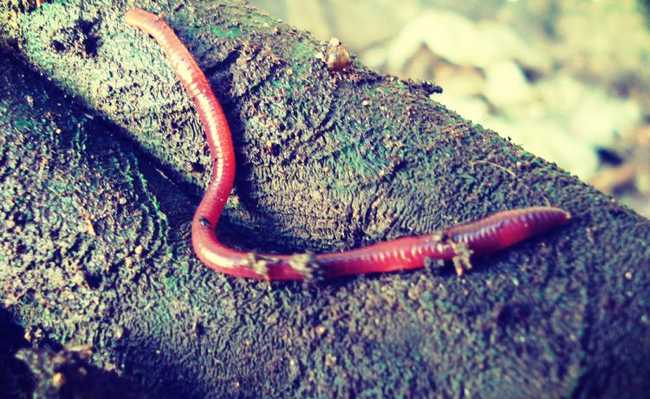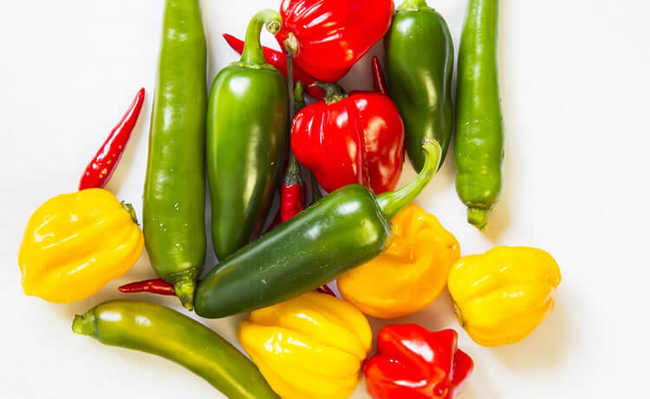Earthworm: environmental importance in nature and at home
Earthworms play an important role in the environment and you can raise them at home

Earthworms do a work of fragmenting organic matter that allows the entire life cycle to be renewed. Facilitating decomposition by microorganisms, they contribute to the generation of humus, enrichment of the soil and reduction of waste destined for landfills and dumps. Earthworms are hygienic beings and you can grow them at home (even in apartments) as pets, through composting, or vermicomposting.
Understand the importance of earthworms to the environment and why it is important and beneficial to have them at home.
- Humus: what it is and what are its functions for the soil
- What are greenhouse gases
- What is compost and how to make it
- Vermicomposting: what it is and how it works
Types of earthworms
Earthworms are annelid animals of the class oligochaete, order Haplotaxide. With the exception of extreme climate environments such as deserts and very low temperatures, earthworms are present all over the world, mainly in forests and natural pastures. However, some species also inhabit aquatic environments.The different species of earthworms have different sizes. On average, an earthworm can range from a few millimeters to a few meters in length. There are records of earthworms belonging to the species Microchaetus sp. measuring seven meters in length and 75 millimeters in diameter.
Earthworm populations range from just a few individuals per square meter to over a thousand, depending on soil conditions such as pH, moisture holding capacity, rainfall and ambient temperature. But, the most important thing for maintaining the life of an earthworm is the availability of organic matter. That's because interactions between organic matter and micro-organisms provide food for earthworms.
Some types of earthworms can reproduce by partogenesis, that is, without the need for mating, which increases their potential to spread to new locations. While some earthworms cannot withstand climates below 0°C, others cannot withstand temperatures above 30 and 35°C.
Although all earthworm species contribute to the breakdown of organic matter, they differ greatly in the ways in which they decompose. Some earthworm species limit their activities to decaying the litter layer on the soil surface and rarely penetrate the soil more than superficially. The main role of these species is the fragmentation of organic matter into fine particles, which facilitates microbial activity.
Other species live just below the ground surface most of the year, except when the climate is very cold or very dry; it has no permanent burrows; and ingest organic matter and inorganic materials. There are also species that inhabit the ground with permanent and deep burrows. These species live mainly on organic matter, but they also ingest considerable amounts of inorganic materials and mix them completely into the soil as a whole. These last species are of primary importance in pedagogy (soil formation).
earthworm lifetime

Image: One of my little wrigglers from the composter by allispossible.org.uk is licensed under CC BY 2.0
The life cycle of many earthworm species has not been well studied. Quality information is available only on about 39 earthworm species, 12 belonging to temperate climate environments, seven African and 20 species from tropical ecosystems such as those in Brazil.
The lifespan of an earthworm varies between ten and 12 years. However, in the wild, earthworms tend to live for at most one or two seasons of the year due to their susceptibility to a wide range of predators.
Earthworms and soil fertility
Earthworms are extremely important for soil formation. Through ingestion, they provide the fragmentation of organic matter and its mixture with the minerals present in the soil.
By feeding organic matter, earthworms improve microbial activity, which, in turn, also accelerates rates of biodegradation and stabilization of humus - organic matter present in various types of soils, which is essential for life on Earth. To better understand what humus is and its importance, take a look at the article: "Humus: what it is and what are its functions for the soil".
Earthworms and soil movement
As Darwin well observed, an earthworm is capable of moving large amounts of soil from deeper layers to the surface. In some species, a single earthworm can move from two to 250 tons of hectares of soil. This movement is very important to keep the soil homogeneous and fertile.
Soil aeration and drainage
The activity of earthworms increases both the porosity and the availability of air (oxygen) in the soil. The holes made by them are also important to improve drainage and increase the rate of water infiltration.
Earthworms provide nutrients to the soil
During earthworm feeding, the carbon/nitrogen ratio in the organic matter progressively drops, but most of the nitrogen is converted into the form of ammonium or nitrate. At the same time, other nutrients such as phosphorus and potassium are converted into a form available to plants.
Without the work of decomposing worms and, especially, microorganisms, nutrients would be eternally trapped in dead organic matter and would not return to the life cycle, becoming scarce and making life on Earth as we know it unfeasible.
The importance of earthworms in composting at home
Most of the garbage produced at home (about 60%) is of organic origin; that is, plant and partly animal remains. This type of waste, if destined for landfills and dumps, ends up increasing the demand for underutilized spaces and contributes to the emission of greenhouse gases.
- How to raise Californian compost worms
- Guide on how to reduce household waste: find out how to reduce waste going to common garbage
A homemade composter containing decomposing microorganisms and earthworms specialized in domestic composting avoids the emission of greenhouse gases, the demand for spaces in landfills and dumps and also produces a rich humus that can be used as a substrate for plants, among other benefits. To do this, it is enough to cultivate earthworms (and benign micro-organisms invisible to the naked eye present in the humus) using plant-derived waste.
- How to make organic fertilizer with food waste
- What is organic waste and how to recycle it at home
- Guide: how is composting done?
What is the best worm for composting?
As we have seen, there are many species of earthworms. The terrestrial ones alone make up about 4 thousand species of earthworms, divided into three ecological groups: anecic, endogeic and epigeic.
The most suitable earthworms for composting are part of the epigeic group, which are those that live close to the surface, being the most used species with a scientific name E. andrei and E. fetida, as they do not open up galleries in the soil and feed basically on organic residues, advantages for breeding in captivity.
The group of anecic earthworms is formed by species that live in vertical galleries. And the group of endogenous earthworms is formed by species that live in even deeper soil profiles - groups that are not very advantageous for breeding in captivity.










